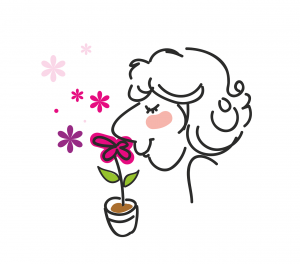
A few months ago, I posted two articles that contained important information for all essential oil users to be conscious of. By being aware of these topics of safety and allergic responses, the desired benefits of essential oils can be optimized and unwanted responses prevented.
I ended the series promising you that I would dive deeper into why someone would be allergic to essential oils to begin with. Recently, Natural Path published my explanation in another two-part series!
First, for those who missed the background, I’ll catch you up on where we left off. Then, I’ll provide an overview of the new articles and the link to access the full versions.
In Part I of Essential Oils, Allergic Responses, and Skin Sensitization – Why and What You Should Know, I discussed the various categories of allergic or hypersensitivity reactions. Of these four types, essential oils have only been reported to be involved in type IV, delayed hypersensitivity reactions.
Medicinenet.com explains an example of this type of reaction with the scratchy discomfort of poison ivy:
Sensitivity to urushiol [the oily resin] occurs when individuals come into contact with it. The first time a person is exposed, they may not develop a rash. However, with repeated exposure, sensitivity develops that ultimately leads to the development of the characteristic rash. Most people (about 85%) will develop sensitivity, while a small percentage of individuals (about 15%) never develop an allergic reaction to urushiol.
However, essential oils are not capable of causing an immune response by themselves. Rather, they can attach to proteins or other allergic molecules, and contribute to an allergic response over time. (They are classified as “haptens.”) This “delayed” response with essential oils occurs in relation to continued exposure and accumulation of the allergen in sensitized individuals.
In ended Part I with a brief overview of some safety considerations and appropriate applications when using essential oils. This included the proper dosage of oils and avoidance of going “heavy-handed.” Finally, I started the discussion on skin sensitization. For those with delicate skin, it’s especially important to rotate their essential oils to prevent this unwanted skin reaction.
(Please see my essential oils database, under the category “Children & Safety” and “Essential Oils and Carrier Oils,” to learn more on safe use of essential oils.)
In Part II, I went into more detail regarding the factors regarding skin sensitization. These included:
- The terpene factor- regarding allergic responses to essential oils, I discovered articles that stated the issue was with synthetic and OXIDIZED terpenes in the oil. Specifically, essential oils contributed to an allergic response WHEN (1) there’s been oxidation of terpenes (2) they were in allergenic fragrance products (3) they were exposed to air and (4) the person was already sensitized.
- Using yucky personal care products – toxins in personal care products could be a major factor in igniting an allergic response to essential oils. This is due to the fact that they act to drive in fat-loving chemicals.
- Skin aging- one will to more sensitive to topical application of products if they are not using preventative measures to decrease the thinning of the skin that occurs with age.
- Photosensitization- some oils, specifically citrus oils, contain a compound that can make anyone’s skin react with the sun for an unpleasant “tomato-kissed” appearance. So, if you aren’t aware of this, you may want to familiarize yourself with the resources I provided in the article.
Now, here’s the link to learn more about what’s the behind the trigger of an allergic response and what may be causative factors.



